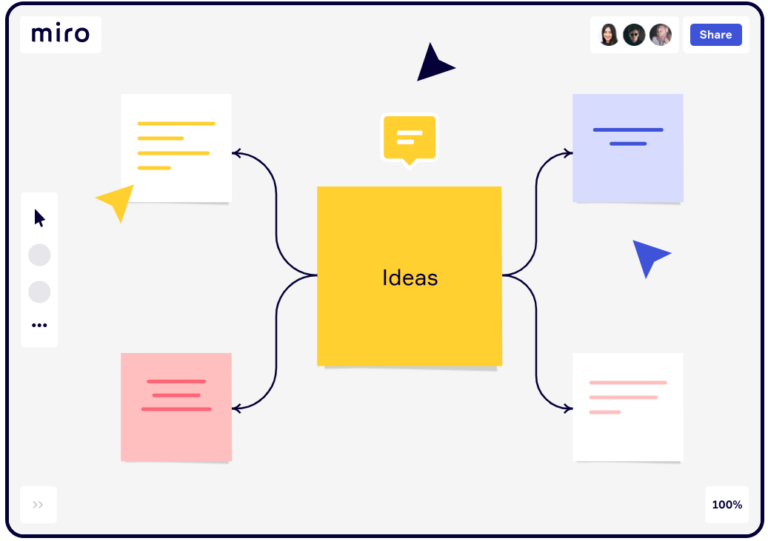What Is a Data Room? Everything Buyers Should Know
Data room has become the digital hub where critical files are reviewed, negotiations advance, and trust is established between counterparties.
If you manage deals, audits, or sensitive partnerships, understanding virtual data rooms is no longer optional. A secure workspace for confidential documents can accelerate diligence, shorten time to close, and reduce risk across industries. Yet many buyers worry about choosing the wrong tool, overpaying for features they will not use, or missing key security and compliance requirements.
This Tech and software blog guide explores data room services from a buyer’s perspective. It explains what a VDR is, how it works, which features matter, and how to evaluate providers, pricing, and implementation. You will also find market context tailored to “Virtual data room reviews in the Canadian market.”
What a Modern Data Room Is (and Is Not)
A virtual data room (VDR) is a secure, cloud-based workspace designed for sharing and reviewing confidential files with internal and external stakeholders. It combines advanced security controls with collaboration features such as Q&A, activity tracking, and granular reporting. Unlike generic cloud storage, a VDR is purpose-built for high-stakes processes like mergers and acquisitions, capital raises, audits, and strategic partnerships.
Think of a VDR as the transaction room for the digital age, with permissioning that reflects deal roles, a defensible audit trail, and set-and-forget safeguards such as watermarking, redaction, and automatic policy enforcement. While everyday file-sharing tools can move basic documents, they lack the governance, visibility, and compliance posture required when every click can be scrutinized in court, during regulatory reviews, or in investor disclosure.
How data room software works
At its core, data room software centralizes sensitive files in an encrypted repository and controls who sees what, when, and how. Administrators define groups, permissions, and retention rules, then invite buyers, advisors, and partners. The platform logs all activity to give sellers and boards confidence that the process is compliant and efficient.
Key workflows typically include secure upload, indexing, document classification, redaction, and review. Role-based access ensures a bidder’s tax team can see certain folders while their HR or legal teams see others. When questions arise, a built-in Q&A channel routes inquiries to subject matter experts and records resolutions for all bidders to review.
Core Features Buyers Should Evaluate
The right VDR should fit your process rather than forcing you to reshape it. Compare platforms such as iDeals, Intralinks, Datasite, Firmex, DealRoom, and ShareVault using the following lens:
- Security foundations: encryption at rest and in transit, multi-factor authentication, single sign-on, and device controls.
- Granular permissions: view-only, download, print, and save-as restrictions; fence view and expiry dates for links.
- Document protection: dynamic watermarking, digital rights management, and native redaction.
- Auditability: immutable logs, exportable reports, and analytics on document engagement.
- Ease of use: drag-and-drop upload, bulk renaming, automatic indexing, and user-friendly navigation.
- Q&A workflows: categories, routing, and visibility controls to avoid bidder collusion and speed answers.
- Search and AI assistance: OCR search, smart tagging, suggested index structures, and summarization where appropriate.
- Data residency and compliance: options for regional hosting, certifications, and governance compatible with your regulators.
- Integrations: email, productivity suites, and deal-management tools to streamline work.
- Support: 24/7 live help, onboarding, and project management for complex transactions.
Security and Compliance: What to Look For
Security is the heart of a VDR. Ask vendors to demonstrate encryption standards, secret management practices, and breach response playbooks. Independent certifications signal maturity, including SOC 2 Type II and ISO/IEC 27001. The latter is a globally recognized framework for managing information security risks. If your organization aligns to standards, prioritize platforms that certify and re-certify routinely. For background, see the ISO/IEC 27001 information security standard.
Why does this rigor matter? The cost of a breach keeps climbing. According to the IBM 2024 Cost of a Data Breach Report, the global average breach cost reached $4.88 million, with legal, regulatory, and reputational impacts extending over years. A strong VDR does not replace your enterprise security program, but it reduces exposure during the most sensitive file exchanges of a transaction.
Compliance should be evaluated in context. A cross-border acquisition may require GDPR alignment in Europe, PIPEDA considerations in Canada, or sectoral frameworks such as HIPAA for health data. Confirm data residency options, subprocessor transparency, and how the provider handles requests from authorities. Your legal counsel and security team should be involved from day one.
Use Cases Across the Deal Lifecycle
Mergers and Acquisitions (Buy-side and Sell-side)
Sellers rely on VDRs to organize financials, contracts, HR files, IP assets, and operational data. Buy-side teams triage the room, ask questions, and analyze engagement metrics to gauge interest and risk. Advanced analytics can reveal which sections receive the most attention, guiding negotiations.
Fundraising and Investor Relations
Growth-stage companies host data rooms for seed to late-stage rounds, updating metrics and governance files as they scale. After closing, the VDR can be repurposed for board meetings and investor updates.
Real Estate Transactions
Property files, environmental reports, leases, and insurance documentation are centralized for buyers and lenders. The VDR reduces email chaos and ensures everyone reviews the latest version.
Audits and Compliance Reviews
Internal audits, external assessments, and regulatory filings run more smoothly when the documentation trail is structured. The VDR becomes the single source for evidence collection and reviewer feedback.
IP Licensing and Strategic Partnerships
When exposing proprietary designs or code, fine-grained permissions, watermarking, and DRM ensure visibility without loss of control. Activity trails support negotiations and compliance checks.
Evaluating Vendors: A Buyer’s Checklist
Use this structured approach to compare platforms fairly and transparently:
- Define your scope: number of users, expected storage, file types, reviewers, and time horizons.
- Map stakeholders: legal, IT security, compliance, finance, and deal leads with clear roles.
- List must-haves: security controls, certifications, data residency, and retention policies.
- Request a live demo: replicate your index structure, permissioning, and Q&A workflow.
- Test performance: large-file uploads, OCR search speed, mobile access, and viewer rendering.
- Validate support: response SLAs, migration help, and after-hours coverage in your timezone.
- Run a pilot: upload sanitized files and invite a small team to simulate the process.
- Review contracts: termination rights, data export, subprocessor lists, and liability caps.
- Confirm TCO: subscription, overage fees, services, and onboarding costs across the project timeline.
- Document decisions: capture risks, trade-offs, and approvals for auditability.
Pricing Models and Total Cost of Ownership
Pricing varies by provider and deal scale. Common models include per-room subscriptions, per-page or storage-based tiers, and enterprise bundles that cover multiple concurrent projects. Watch for overage charges on storage, users, or data-transfer. Also quantify soft costs such as team time spent on setup, training, and ongoing administration.
For one-off processes such as a single M&A sale, a project license may be most economical. For serial acquirers, funds, or corporate development teams, an annual subscription usually lowers the per-deal cost while standardizing security and workflows.
Implementation and Change Management
A VDR is powerful only if teams adopt it. Treat deployment as a mini project with an owner, milestones, and training plan. Start by importing an index template, mapping permissions, and uploading sanitized test files. Establish naming standards and a Q&A taxonomy before inviting external users. Provide quick-start guides and host a short live training for deal teams and counsel. Continuous improvement matters: after each project, run a retrospective to refine templates and rules.
Virtual data room reviews in the Canadian market
Canadian buyers often prioritize data residency options, bilingual support, and compliance with PIPEDA and provincial privacy laws. Industry familiarity also matters. For example, Firmex has deep roots in Canada and is common across mid-market deals, while global platforms such as Intralinks and Datasite are frequently selected for complex cross-border transactions. Regional service quality can be a tiebreaker, especially when 24/7 support needs to respond in Canadian time zones and languages.
Budgeting in CAD, reconciling tax treatment, and ensuring contracts reference Canadian legal entities can simplify procurement. When reviewing providers, look for transparent disclosures about hosting locations, subprocessors, and breach notification practices tailored to Canadian regulators. Many buyers rely on independent comparisons and Virtual data room reviews in the Canadian market to benchmark usability, performance, and support responsiveness throughout a full deal lifecycle.
Comparing Platforms: Feature Deep Dive
Permissions and Roles
Seek flexible roles for admins, content owners, reviewers, and observers. Project templates should allow you to spin up new rooms with consistent permission frameworks.
Document Intelligence
OCR enhances searchability for scanned PDFs. Auto-classification and suggested indexing can reduce manual effort. Native redaction helps teams safely share documents without exporting to third-party tools.
Collaboration and Q&A
Effective Q&A routes questions to the right subject matter experts and publishes resolved answers to all relevant bidders. Category-based workflows prevent duplication and speed closure.
Analytics and Reporting
Heat maps and engagement reports reveal where reviewers spend time. Sellers can prioritize follow-ups and address areas of concern early to avoid surprises late in the process.
When to Upgrade or Switch
Consider upgrading if you are running multiple concurrent projects, your team is managing complex Q&A across many bidders, or your compliance requirements have evolved. Warning signs include frequent permissioning mistakes, slow file rendering for large CAD or media files, or limited reporting that hinders insight into buyer engagement. When switching, plan for data export, archive integrity, and retention policies to maintain a defensible record of past deals.
Common Mistakes to Avoid
- Using generic file-sharing tools for transactions that demand auditability and legal-grade controls.
- Inviting external users without testing permissions and watermarks on a subset of files.
- Skipping an information governance review of retention and deletion rules.
- Overlooking data residency requirements that may affect compliance or client commitments.
- Focusing only on features, not on support quality and response times during crunch periods.
FAQs for First-Time Buyers
Is a VDR only for M&A?
No. VDRs serve any sensitive process that requires controlled sharing and auditing, including fundraising, audits, litigation, and strategic partnerships.
How long does setup take?
Simple rooms can be live within hours using templates and bulk upload. Complex, multi-bidder processes may require a few days to finalize permissions and Q&A routing.
Can I re-use a room after closing?
Yes. Many organizations archive rooms for audit purposes and then repurpose the environment for board reporting, investor relations, or future deals.
Bringing It All Together
The right platform should accelerate diligence, protect confidential information, and give you decision-grade analytics. When comparing data room software vendors, align features and security with your process, involve legal and security stakeholders, and validate support quality under real conditions. With clear requirements and a disciplined evaluation, your next deal room will not just store files. It will become the trusted workspace where complex transactions move faster and with less risk.






